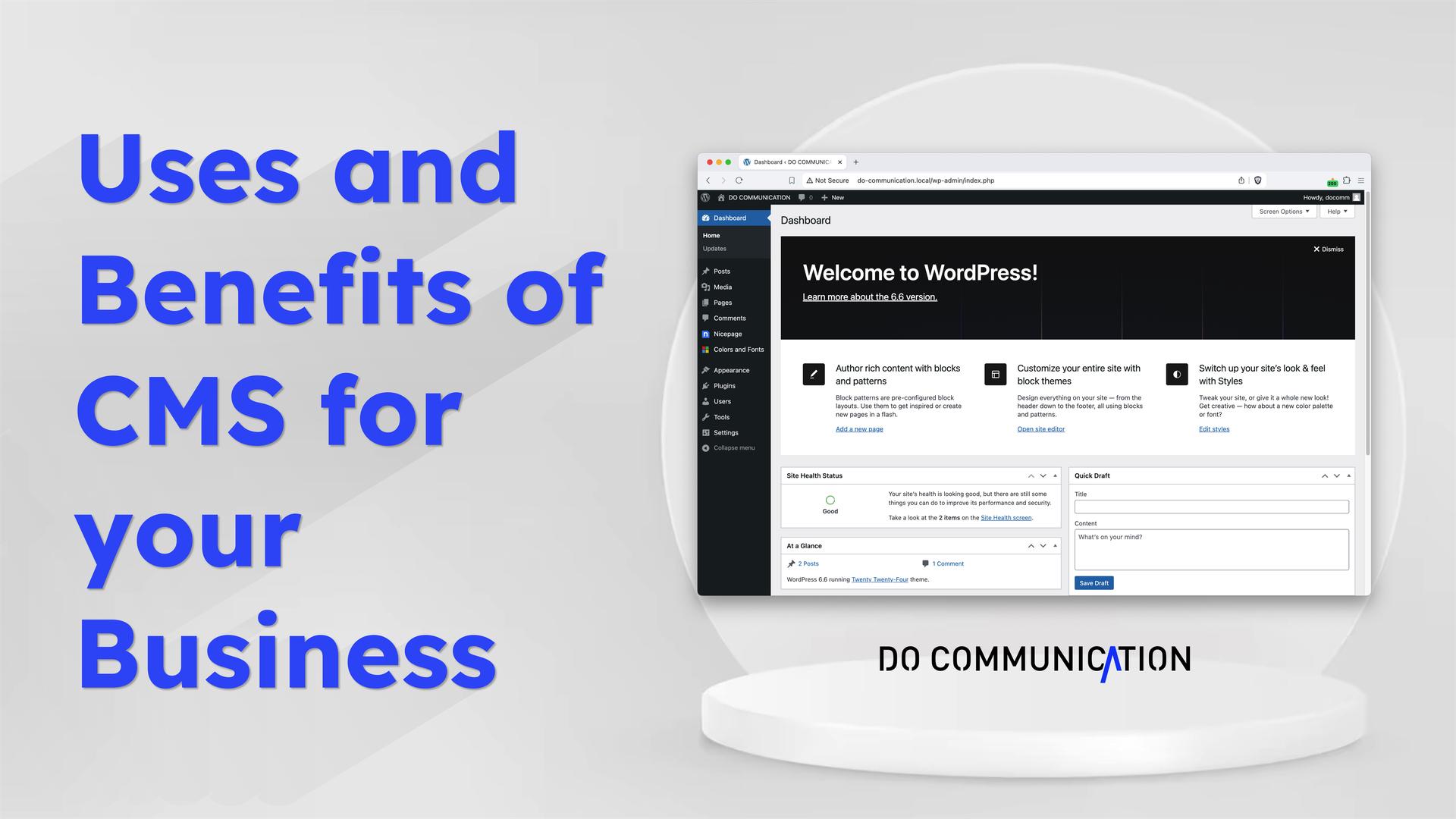The Internet today has transformed into a huge online marketplace, which in turn has given rise the demand for constant content creation to address the would be consumers.
From product and service descriptions to blogs and creatives, every aspect needs to be updated and optimized constantly to counter the rising competition and cater customer demand. Content Management Systems make it easier to do that by taking away the recurring requirement for code level development for website owners.
Table of Contents |

In today’s post, we look at the uses and advantages of CMS, and why you may need one.
What is a CMS?
A CMS, or Content Management System, is a computer program that helps users create, manage, and modify content on a website without needing specialized coding skills or technical knowledge. Typically, the Content Management System is a web based service or a custom program that runs on your domestic servers.
Many CMS systems allow multiple people to work on the website at the same time. This is useful for teams where different people might be responsible for creating, editing, and publishing content.
Key Features and Benefits of CMS
Content Management Systems have become preferable to custom website development for a number of reasons. Some key features that make them stand out include:
- A User-friendly Interface: Allows easy navigation and access to necessary tools, including an intuitive dashboard summarizing website activity like recent posts, comments, and analytics.
- Responsive Themes and Templates: A variety of pre-built themes and templates to create a new website quickly and adapt it for mobile, tablet, and desktop screen sizes.
- WYSIWYG Editing: An abbreviation for “what you see is what you get”, these website editors allow users to visually transform and modify elements without needing any coding knowledge.
- Version Control and Backups: Built-in version control to track content changes and revert to previous versions if needed.
- Multi-language Content Creation: The ability to create and manage content in multiple languages to reach a global audience.
- Publishing Controls: The ability to schedule posts, set expiration dates for content, and control who can publish content.
- Built-in SEO Tools: Tools to help optimize website content for search engines (important for search engine traffic and ranking your website).
- Plugins Support: Integration with other third-party applications and services such as marketing automation platforms, social media platforms, and site analytics tools.
- In-built Analytics: Tools to provide you with detailed analytics reports on website traffic, user behavior, and conversions.
- Content Staging: The ability to create a staging environment to test changes to your website before making them live, helping to avoid mistakes on the live website.
- Security: Robust security features to protect your website from hackers and malware, including regular security updates, user authentication, and secure data storage.
- Support: Support options in case you have any problems using the platform, such as documentation, tutorials, or a help desk.
WordPress, Wix, SHopify, Joomla, and Drupal are examples of the most popular Content Management Systems out there.
Why do you need a CMS?

As a business owner you are always being pulled in different directions by one thing or another, your website being one of them. Content Management Systems can help in taking away some of the more tedious and repetitive tasks from your plate. Here are the reasons why you may consider switching to a Content Management System:
-
Flexibility:
A CMS enables on the fly changes to your website and blog without needing a developer in tow. If you are used to managing your own content or are very particular about what goes on the website, but have to handle ten other things as well, a CMS will give you the flexibility to post and update content when you have time to spare.
-
User Experience Improvement:
Sometimes newly built websites can be all function and no form, meaning that you are offering a ton of features but your users do not know how to use them. Or, maybe there is a quality of life change you wish to make, but the development time is too long, or the cost too prohibitive. But in the case of WYSIWYG CMS websites, you can make those changes in a matter of minutes, or perhaps a couple of hours and improve your UX.
-
Access to Modern Code and Design:
With cloud based CMS systems, you do not have to worry about updating your code, it’s done seamlessly in the background with only a handful of notifications for you to go through. Similarly, every CMS platform is supported by hundreds if not thousands of developers creating custom designs and templates that you can purchase, install, and modify to your liking. These off-the-shelf implementations are the biggest time and cost savers when you need to go live quickly.
-
In-Depth SEO:
As a Digital Agency catering to global clients, we often hit this hurdle. Old code, custom platforming, or simply a ton of bugs, anything and everything can come in the way of implementing technical SEO changes. And while Content Management Systems may also require some custom tinkering to implement all changes, generally they have all the basics covered and allow advanced SEO implementations without needing extensive development related headaches. What's more, platforms like WordPress integrate seamlessly with powerful third-party SEO plugins. These plugins can supercharge your search engine optimization efforts and take your website's visibility to a whole new level.
Read Also - Why SEO Matters for Your Business and How It Boosts Success
-
Integrated AI Features:
CMS platforms have the resources needed for integrating popular AI features which you may otherwise find difficult to implement seamlessly, such as LLM based text and image generation. Moreover, CMS platforms also have a huge user base to test these features and improve the integrations as we move towards an AI based digital marketing. For example, HubSpot offers a fully integrated marketing platform with AI features for content assistance that suggests improvements to grammar, style, and SEO for your content. Squarespace incorporates AI for image recognition, content categorization, and personalized recommendations.
-
Time and Cost Benefits:
Most CMS systems operate on a subscription model which also includes additional services like custom domains, website hosting, email services, and SSL certification. Depending on use-cases you can switch between plans to get the best suited configuration for your business, and scale up when the need arises. Compared to custom website development and the time delay cost of implementing changes, CMS websites can significantly reduce website maintenance time and cost.
-
Data Security:
One of the biggest challenges of our time is to keep sensitive information safe and backed up. CMS websites are at an advantage here (albeit with some added cost implications), as the data is secured by enterprise grade encryption and periodic backups are taken to ensure rollbacks and restores, just in case you need them.
Get in touch

At DO COMMUNICATION, we help businesses in first-time CMS setup for most popular content management platforms. We also design and develop custom CMS with complete backend support and documentation. If you have been researching content management systems for your business, we can aid and advise you in choosing the right one for your enterprise, and possibly help set it up. You can drop your queries to info@digitalobsession.in.


